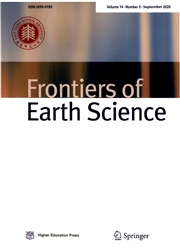Variability and change of climate extremes from indigenous herder knowledge and at meteorological stations across central Mongolia
作者:Sukh TUMENJARGAL,Steven RFASSNACHT,Niah BHVENABLE,Alison PKINGSTON,Maria EFERNÁNDEZ-GIMÉNEZ,Batjav BATBUYAN,Melinda JLAITURI,Martin KAPPAS,GADYABADAM
摘要:In semi-arid regions,air temperatures have increased in the last decades more than in many other parts of the world.Mongolia has an arid/semi-arid climate and much of the population are herders whose livelihoods depend upon limited water resources that fluctuate with a variable climate.Herders were surveyed to identify their observations of changes in climate extremes for two soums of central Mongolia,Ikh-Tamir in the forest steppe north of the Khangai Mountains and Jinst in the desert steppe south of the mountains.The herders’indigenous knowledge of changes in climate extremes mostly aligned with the station-based analyses of change.Temperatures were warming with more warm days and nights at all stations.There were fewer cool days and nights observed at the mountain stations both in the summer and winter,yet more cool days and nights were observed in the winter at the desert steppe station.The number of summer days is increasing while the number of frost days is decreasing at all stations.The results of this study support further use of local knowledge and meteorological observations to provide more holistic analysis of climate change in different regions of the world.
发文机构:ESS-Watershed Science Cabinet Secretariat of Government of Mongolia Natural Resources Ecology Laboratory Cooperative Institute for Research in the Atmosphere Cartography FRS-Rangeland Science Center for Nomadic Pastoralism Studies Institute of Meteorology
关键词:climatechangeclimateextremeindicesindigenousknowledgesystemstemperaturePRECIPITATION
分类号: D67[政治法律—中外政治制度]
- Spatiotemporal influences of land use/cover changes on the heat island effect in rapid urbanization area
- A simplified index to assess the combined impact of tropical cyclone precipitation and wind on China
- Land use and land cover classification using Chinese GF-2 multispectral data in a region of the North China Plain
- Erosion-deposition patterns and depo-center movements in branching channels at the near-estuary reach of the Yangtze River
- Metal accumulation in Asiatic clam from the Lower Min River (China) and implications for human health
- Estimation of copper concentration of rocks using hyperspectral technology
- Chemical and minero-petrographical changes on granulite rocks affected by weathering processes
- BMA probability quantitative precipitation forecasting of land-falling typhoons in south-east China
- Accumulation of unconventional petroleum resources and their coexistence characteristics in Chang7 shale formations of Ordos Basin in central China
- Improvement of typhoon rainfall prediction based on optimization of the Kain-Fritsch convection parameterization scheme using a micro-genetic algorithm


